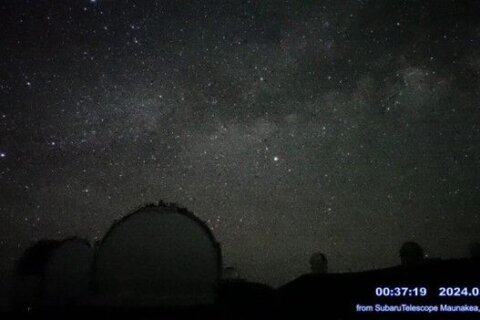I am quite sure that everyone in “The DMV” is looking forward to the arrival of fall. Why? Where do I start!?
Lots of rain, lots of hot days, lots of tornadoes — an ugh summer. Add to that we have had some very weird space-related stories recently that would qualify as “X-Files” on the famous TV-series: a solar observatory in New Mexico shut down and evacuated by none other than the FBI; the discovery of a hole drilled into a Russian spacecraft docked at the International Space Station; and the .
Thank goodness that our planet cares not about all this as fall officially arrives Saturday at 9:54 p.m. EDT. Astronomically speaking, this is the date and time of the , the day when the sun is seen directly overhead at noon at the Earth’s equator.
Both the Northern and Southern hemispheres will have almost equal amounts of daylight and night as the sun rises due east and sets due west everywhere on the planet except for the poles. , Earth is equally illuminated by the sun. All of this is repeated during the vernal equinox, which marks the arrival of spring in the Northern Hemisphere around March 21.
Earth’s seasons — fall, winter, spring and summer — are caused by its orbit around the sun and the 23.5-degree tilt of its axis. This causes the amount of sunlight falling on Earth’s Northern and Southern hemispheres to constantly change. The two hemispheres are always opposite in their seasons — our fall is their spring, while our summer is their winter.
If you are outside your residence at sunrise on Saturday, take note of where the sun rises — that is due east. Every morning at sunrise, you will notice that the sun is moving a little bit to the right, or toward the south at sunrise. This will continue until the sun reaches a point on the horizon that marks its farthest point south — which marks the first day of winter and the shortest amount of daylight for the year — the winter solstice.
The sun will start to move to the left or north on the horizon, and the amount of sunlight will increase until around June 21, the summer solstice, the greatest amount of daylight for the year. Then the season cycle begins anew with the sun heading south on the horizon.
The arrival of fall means that the sun is getting lower in the sky each day at noon and that the nights are growing longer and cooler. Our trees will soon begin to take on the beautiful colors of fall, and the air will have that smell that only can happen this time of year.
The longer nights allow us to better enjoy the night sky. After sunset, beautiful and bright Venus awaits our gaze low in the western sky.
Working our way in the sky from Venus toward the east, Jupiter, Saturn and Mars are still visible in the sky after dark, as is the summer Milky Way. You will need a dark sky site such as and the moon out of the sky to see the glorious Milky Way. You can get updates on the fall colors using the park’s website, and I hope you can make it to one of my .
The Full Harvest Moon in our sky on Monday, rising gloriously bright and beautiful in the east at sunset. I will be at sea off the coast of Japan and am looking forward to trying to photograph the full harvest moon rising.
High in the east, you can see the Great Square of Pegasus, and above the eastern horizon at 11 p.m. stands the beautiful Seven Sisters or Pleiades star cluster. That bright star in the northeast is Capella, and the lonely stellar sentinel in the south is Fomalhaut.
Enjoy the clean, crisp air of fall and the lengthening nights. Breathe deep while you gaze skyward to see the stars — you’ll be glad you did.
Follow to keep up with the latest news in astronomy and space exploration. You can email me at skyguyinva@gmail.com.







